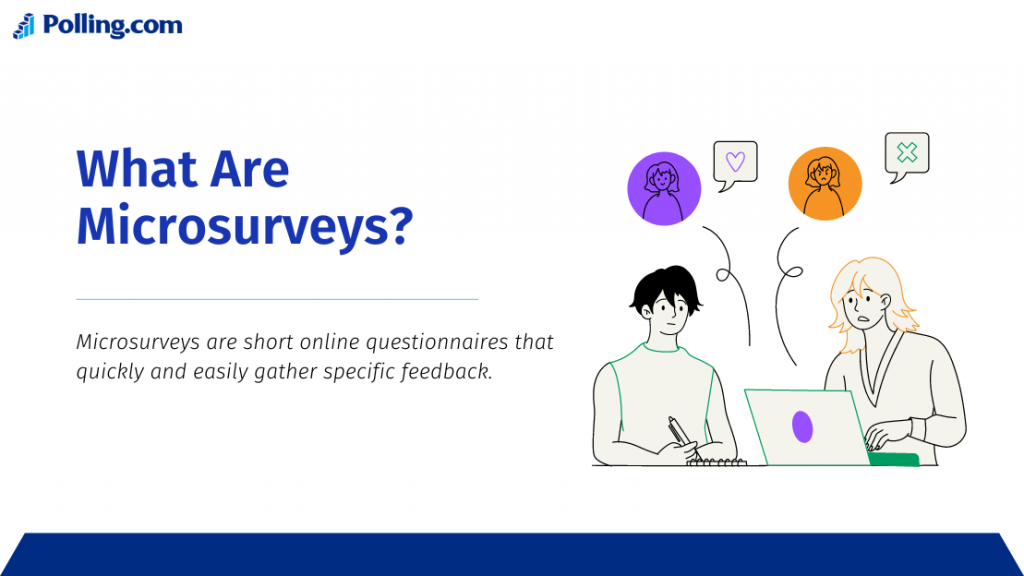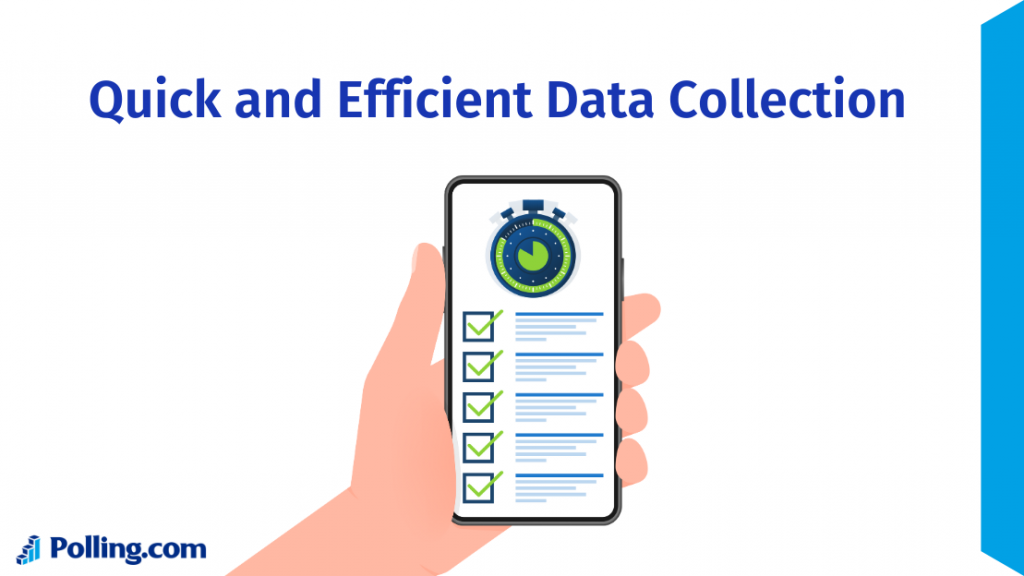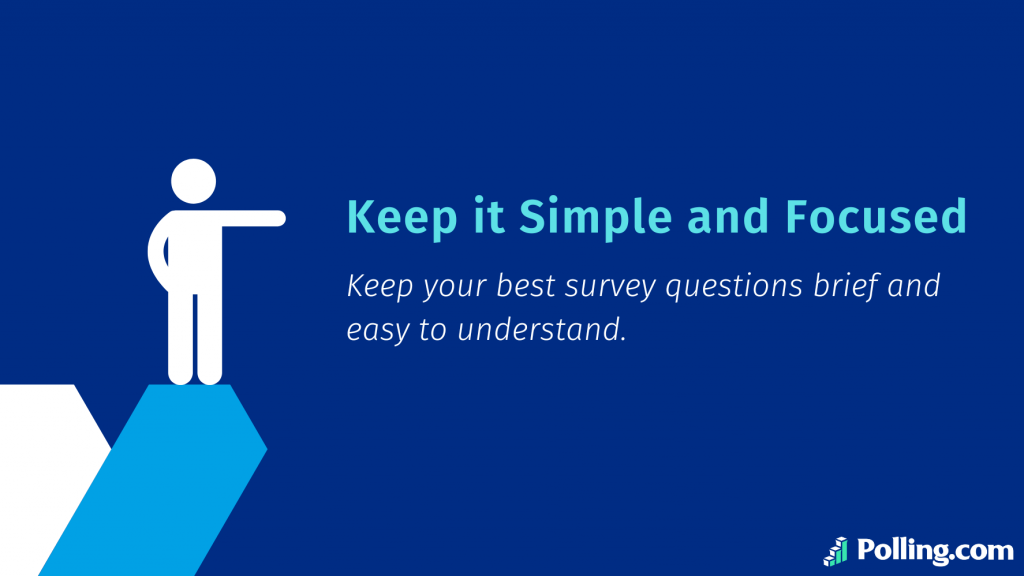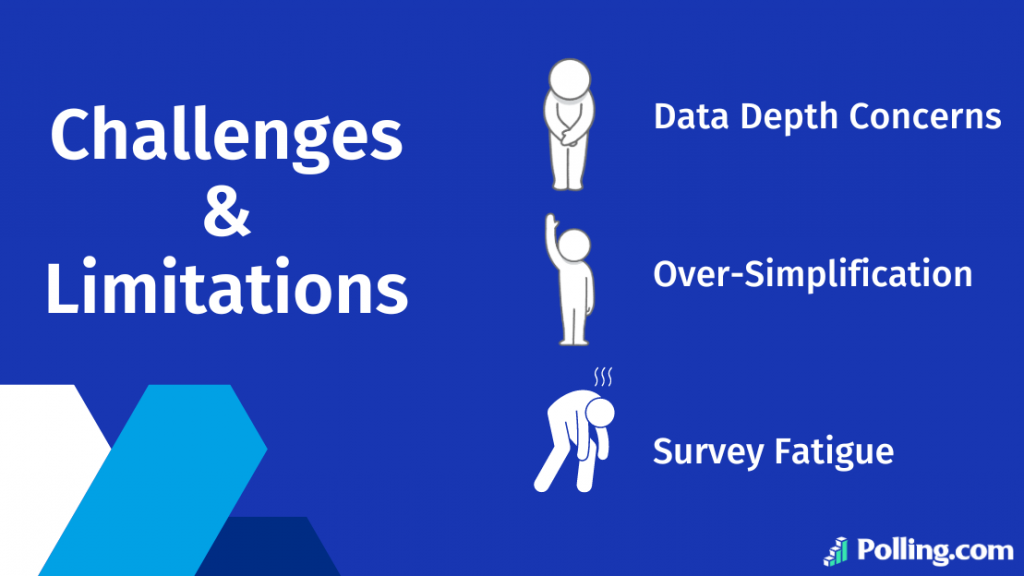
Microsurveys: A Quick Guide to Gathering Insights Fast
In our fast-paced digital world, businesses need ways to gather feedback and insights quickly.
Customer expectations and markets change rapidly today. Companies that want to keep up need to collect real-time input from customers, employees, and the marketplace.
This is where microsurveys come in.
Unlike long surveys that take time to complete, microsurveys go straight to the point, which is suitable for gathering quick customer feedback and responses.
The focused brevity of microsurveys makes them well-suited for gathering timely feedback. Many industries now use them because they provide a fast way to check in with customers, employees, and prospects.
What Are Microsurveys?
Imagine how you can get valuable feedback in just a few seconds, as microsurveys can make it possible.
You and your business can gather targeted feedback from respondents with minimal effort.
Definition and Characteristics

Microsurveys are short online questionnaires designed to quickly get specific feedback. They focus on just a few key questions for fast and focused data collection.
Microsurveys first became popular in market research but are now used across retail, software, services, and HR industries.
Here are some examples of microsurvey questions:
- How satisfied were you with your service on a scale of 1-10?
- What did you think of our new app design?
- Would you recommend our product to a friend?
Because microsurveys are designed to be quick and easy for people to complete, often in less than a minute, they usually use brief surveys that consist of just a few questions and focus on a specific topic.
Microsurveys have some unique characteristics compared to traditional surveys:
- Short length: They are comprised of only 1-5 questions total. This focuses them but limits the detail gathered.
- Rapid completion: It takes most people 1-2 minutes to complete a microsurvey. This enables high response rates.
- Digital format: Microsurveys are designed for online distribution through the web, email, mobile apps, etc.
- Targeted audience: They focus on collecting feedback from specific, relevant groups rather than the general population.
- Frequent/recurring use: Microsurveys are meant for regular distribution to keep up to date versus long annual surveys only.
- Standardized questions: They often rely on standardized question scales like CSAT, NPS, etc., for consistent measurement over time.
The core features that lead to the constrained length of microsurveys mean participants can quickly provide focused feedback.
The tradeoff is less open-ended data per respondent. Their brevity leads to higher response rates and rapid insight generation.
Types of Microsurveys
While microsurveys share consistent characteristics, there are standard types of surveys used:
1. Single Question Surveys
As the name implies, these contain one targeted question. This format is ideal for getting quick responses on a particular aspect, such as customer satisfaction.
For example:
- How likely are you to recommend our product to a friend or colleague?
- Options:
- Very Likely
- Likely
- Neutral
- Unlikely
- Very Unlikely
The single question reduces participant burden. Single-question formats work very well for customer satisfaction and brand perception surveys.
2. Rating Scale Surveys
These present respondents with a rating scale to judge a product, experience, or feature. Typical examples are CSAT, NPS, and product reaction surveys.
For example:
- On a scale of 0-10, how likely are you to recommend our product/ service to a friend or colleague?
Rating scales allow capturing sentiment across a nuanced spectrum with minimal questions. Scales typically range from 0-10 or 0-5.
3. Open-Ended Comment Surveys
Though most microsurveys use closed-ended rating scale questions, some integrate an open-ended follow-up question like:
- Why did you choose this rating?
- Any additional feedback you’d like to share with us?
Open-ended comments add richer qualitative data to complement the ratings and assist your business in understanding more about the context and the reasons behind customer opinions.
Benefits of Using Microsurveys
There are many benefits that explain the growing use of microsurveys by businesses today.
Let’s explore each one by one.
Quick and Efficient Data Collection
The brevity of microsurveys allows companies to gather data and insights much faster than traditional surveys.
Short 1-5 question surveys take only 1-2 minutes to complete, which allows for a rapid turnaround.

As the data is collected quickly and promptly, the ability to take action on feedback while it’s still relevant is a big advantage for most businesses.
High Response Rates
Understandably, survey response rates have declined over time as people are asked to complete different surveys from many parties simultaneously.
Microsurveys counter this concern through their focused, concise nature.
Average response rates for micro surveys are typically higher compared to long surveys.
The shorter the time required for participants to complete the survey, the higher the likelihood of their participation.
Cost-Effectiveness
Microsurveys allow organizations to gather feedback and insights at a fraction of the cost of other methods like focus groups or interviews.
Because they are digital and come with short, focused questions, microsurveys can be quickly sent out and analyzed automatically.
This saves time and cost, as microsurveys can reach many people simultaneously and reduce the need for manual work.
Real-Time Feedback
Unlike long annual surveys, microsurveys can be deployed rapidly to provide real-time insights when needed. This is invaluable for agile, as most businesses need to adapt quickly.
For example, if you send a microsurvey after the launch of a new product feature, you can get immediate feedback to make quick improvements based on actual and timely feedback from users.
Microsurveys create a feedback loop that informs decisions and campaigns while they are still relevant. This facilitates adjustments based on ever-changing consumer and employee sentiment.
Applications of Microsurveys

Microsurveys are versatile tools that are being used more and more in different fields to gather helpful information, such as:
Customer Feedback
Companies in all industries use microsurveys to better understand customers and find ways to enhance satisfaction.
By sending out short surveys right after purchase or interaction, businesses can quickly pinpoint the pain points or determine what customers like or dislike about products/services.
Microsurveys are also helpful for programs that gather ongoing customer feedback and ideas. They make it easy to get customers’ opinions and suggestions.
Employee Engagement
Micro surveys can be performed regularly to see how employees feel, their attitudes, and any concerns they might have.
HR teams use the feedback to guide actions around corporate culture, management, benefits, and other workforce improvements.
Market Research
Microsurveys allow marketers to rapidly test positioning, messaging, advertising, concepts, pricing models, and more pre-launch.
Quick feedback facilitates the iteration and optimization of marketing elements before the full launch of products, services, or applications.
User Experience (UX) Testing
Incorporating microsurveys at touchpoints within a digital product, app, or website provides immediate user feedback.
To guide enhancements, UX teams gain insights into pain points, enjoyment, ease of use, and satisfaction.
Best Practices for Designing Microsurveys
Designing effective microsurveys involves several vital practices to ensure you get valuable and reliable feedback.

Here are some top tips on how to create surveys and make the most out of your microsurveys.
Keep It Simple and Focused
To get the best responses, keep your best survey questions brief and easy to understand.
The concise nature is what makes them effective. Each question included should directly relate to the specific insight needed and go straight to the point.
Also, avoid using complex language or jargon. Instead, use precise wording that is easily understood.
Target the Right Audience
Consider who can provide the most relevant and actionable feedback.
Choose your audience based on their demographics or behaviors that match the purpose of your survey.
This way, you’ll get more valuable and applicable insights.
Timing and Frequency
Avoid oversurveying any group, as it leads to fatigue and deteriorating data quality over time.
Balance reaching your target group without overburdening them.
Additionally, effective timing should be considered, such as after key events.
Send microsurveys when they’re most likely completed, such as right after purchase or interaction.
Incentivize Participation
Think about giving a small reward for completing microsurveys, like a discount, a chance to win a prize, or a donation to charity.
These incentives can encourage more people to participate and give their feedback.
Just be sure that the reward doesn’t affect how people answer the questions.
Challenges and Limitations

Microsurveys can be highly effective but do have some limitations to consider.
Data Depth Concerns
The brevity of microsurveys means collecting fewer data per respondent.
This can raise concerns about data richness and actionability. Because with only a few questions, there’s a risk that responses might lack depth of accuracy.
As a result, good survey questions and statistical significance testing can assist businesses in overcoming this. This ensures you gather meaningful insights while avoiding incomplete data.
Over-Simplification
Very concise questions can risk oversimplifying complex topics.
The surveys are short, so they may not capture the full context or nuances of the situation.
It’s necessary to care for wording and answer choices to capture nuance even within tight constraints.
Survey Fatigue
As with any survey method, excessive use of microsurveys with particular groups runs the risk of survey fatigue over time.
In other words, respondents become tired or annoyed by constant requests for feedback. This may degrade data quality and response rates.
Managing frequency and over-surveying is necessary in this case. Ensure each survey is meaningful, and avoid overloading your audience with too many surveys at once.
Tools and Platforms for Conducting Microsurveys
Many microsurvey software solutions exist to support creating, fielding, and analyzing microsurveys.
Here are some popular options:
- SurveyMonkey: One of the most well-known and full-featured online survey platforms. It provides question banks, templates, and design guidance tailored to microsurveys.
- Google Forms: A free, lightweight microsurvey option as part of Google’s productivity suite. Quick to set up with pre-built themes but limited built-in analysis.
- Typeform: Specializes in conversational, interactive survey formats that feel more engaging to respondents. Features include survey logic, analytics, and APIs.
- Qualtrics: An enterprise-class research platform supporting sophisticated distribution, randomization, analysis, and integration.
To get even better insights from your microsurveys, you can connect them with your existing systems by linking your microsurvey tool with your CRM system.
This helps you see feedback and other customer information and improve your marketing strategies.
Connecting your microsurveys to analytics tools lets you combine survey results with other data.
This gives you a clearer view and helps you make better decisions based on a complete information set.
Conclusion
Microsurveys provides a lightweight yet powerful method for gathering focused, real-time customer, employee, and market insights.
Businesses across industries have adopted microsurveys to enable more agile decisions grounded in user feedback.
With care taken in question design and deployment, microsurveys generate high response rates and actionable learning, even with a minimal respondent burden.
As a result, it is no surprise that micro surveys will continue growing as an efficient way to capture quick insights that drive growth across various industries.
